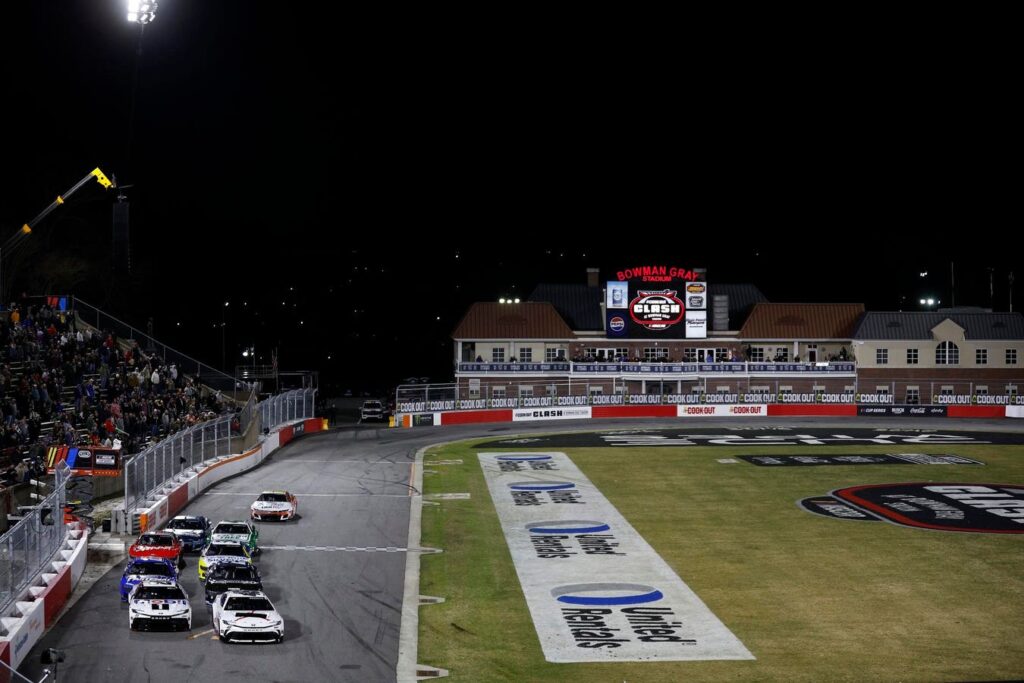WINSTON SALEM, NORTH CAROLINA – FEBRUARY 01: Tyler Reddick, driver of the #45 Jordan Brand Toyota … [+]
In the end, it wasn’t about the racing. Then again, it never really is, is it? Ever since the Clash became a traveling circus, NASCAR’s pre-season spectacle has been less about wheel-to-wheel action and more about spectacle itself. A chance for sponsors to get their logos plastered across national television, for drivers to shake off the winter cobwebs, and for NASCAR to prove—once again—that they are capable of pulling off the impossible.
And for the past three years, that’s exactly what they’ve done. Brilliantly.
When NASCAR first announced that it was hauling its high-octane roadshow into the tight confines of the L.A. Memorial Coliseum in 2022, the sport’s purists reacted as if someone had suggested installing a Starbucks inside the Sistine Chapel. The rest of the world watched with morbid curiosity, waiting for the inevitable disaster.
But the disaster never came. Instead, NASCAR pulled off something remarkable: a temporary quarter-mile bullring inside one of the most iconic stadiums in America, a backdrop straight out of a Hollywood movie (because it was, quite literally, Hollywood), and an influx of celebrities wandering around pretending they knew what a splitter was. Throw in musical acts that no one over the age of 30 had ever heard of, and it was mission accomplished. The sport gained fresh eyeballs, sponsors gleefully counted their ROI, and NASCAR proved that its cars could, in fact, race anywhere they damn well pleased.
So naturally, after three successful years, NASCAR decided it was time to take the Clash somewhere new. And in a move that screamed, “And now for something completely different,” they chose Bowman Gray Stadium—a place that is, quite literally, the polar opposite of Los Angeles. Fittingly, that phrase also happens to be the title of a 1971 Monty Python film—the same year NASCAR’s top series last raced at the venue.
The glitz and glamour of Hollywood were gone. No A-list celebrities, no made-for-TV drama, not even a musical act. But what Bowman Gray lacked in production value, it more than made up for in something far more valuable: history. You see, while Los Angeles was off making movies about racing, Bowman Gray was actually living it. Built in 1937 as part of FDR’s New Deal, NASCAR’s founder, Bill France, turned the stadium into a proving ground for stock car racing in 1949. And from that moment on, the track never stopped hosting races.
They call it the Madhouse, and for good reason. Over the decades, it has witnessed more bent fenders, broken egos, and flying fists than a heavyweight boxing match. It’s the kind of place where racing is personal, grudges last for years, and the fans come not just to watch but to take sides. If a race at the Coliseum felt like a carefully choreographed performance, a race at Bowman Gray felt like stepping into a bar fight—only with stock cars.
And yet, when the checkered flag fell on Sunday night and Chase Elliott was crowned the winner, there were no fists thrown, no all-out brawls—just a few bruised egos. Perhaps, for once, the Madhouse behaved itself.
But make no mistake, this Clash wasn’t about attracting new fans. No, this time, it was about paying homage to the sport’s past. A love letter to the die-hards, a message to the faithful that no matter how far NASCAR expands, it will never forget where it came from.
More importantly, it proved something bigger: NASCAR can take this format anywhere.
“I think going to L.A. was great,” Kyle Larson said. “I think that was huge for our sport. It was fun for all of us involved. I think coming to Bowman Gray is amazing, as well. You know, resurrecting… I mean, you’re not resurrecting this place, but you’re still tapping into your roots a lot coming to this event here. Yeah, I think spending two or three years at a place is great. But I do think the L.A. thing was great because it proved that they could take that model to different venues, so I would like to see us tap into that a lot.”
There are also whispers that NASCAR could take its Clash outside the boarders of the U.S., some are hinting that first place could be Brazil.
And that’s the real takeaway. Whether it’s a stadium in the heart of Hollywood or a short track steeped in NASCAR history, this Clash format works. And as long as it does, NASCAR will keep taking it to places no one ever imagined.
Read the full article here
